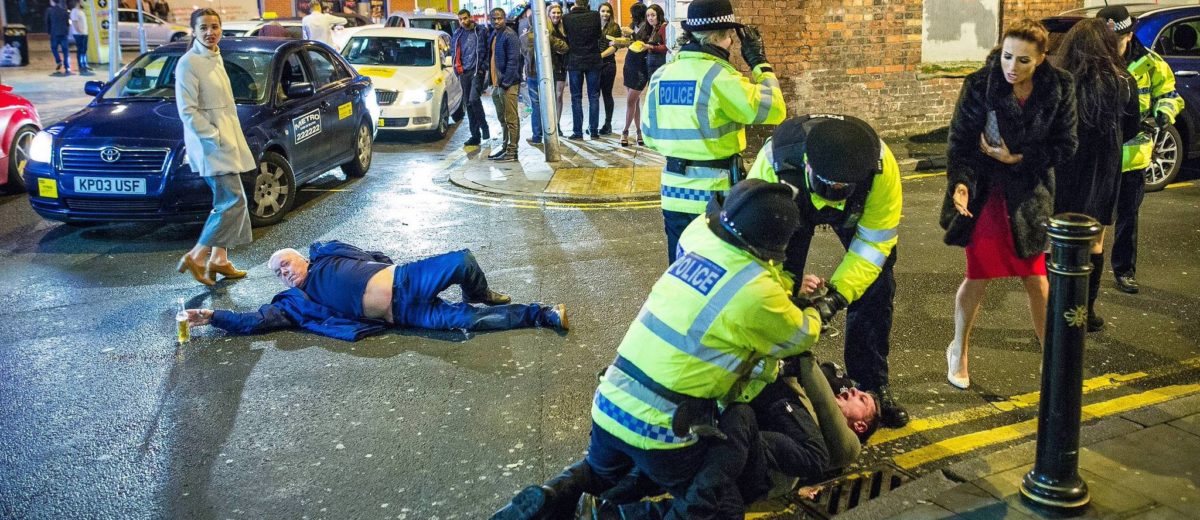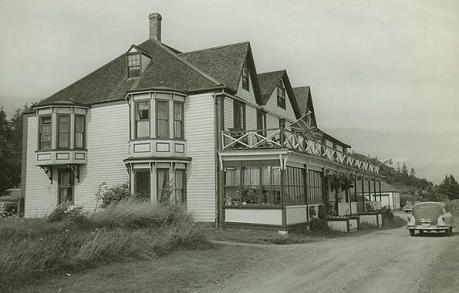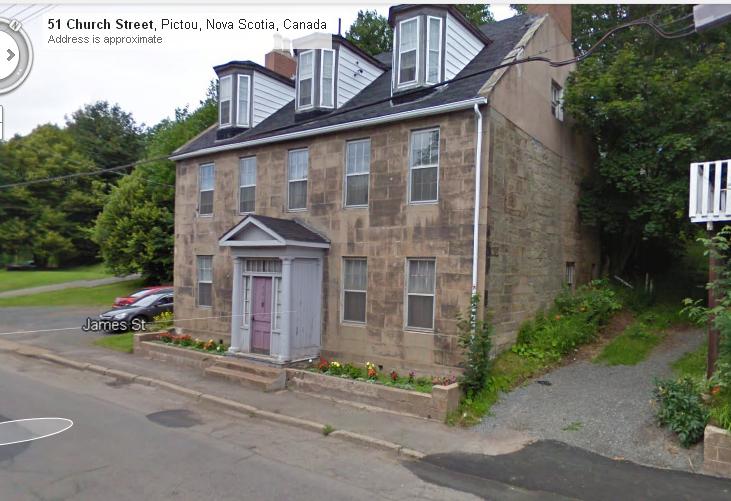Last time I saw one of these was back in 2005. It may have a ways to go before it is done but we do have a fire boat now.
Month: March 2012
So Do We Now View Good Beer Drinkers As The Rock Stars?
Fortunately, the brewer as “rock star” stuff appears to have passed after much well deserved pointing at laughing at those who suggest it or, worse, accept it. But apparently the beer drinker might be legitimately treated like one if KISS bassist Gene Simmons has his way:
…when the bar officially opens Friday evening, it will offer more than 50 taps dedicated to craft beer and a menu overseen by Michael Zislis of Rock’n Fish. Ultimately, Simmons has other visions. “I’m such a blessed guy, and for the rest of the people in the world, they may not actually be able to be a rock star, but we can make them feel it,” Simmons said. “This is the experience of being a rock star. You will be waited on hand and foot. If we can arrange it — and this is not a bad idea — we’ll have the most beautiful girls peeling grapes for you, your highness. It’s the idea that you’re special and should be treated that way.” Rock & Brews, a partnership of Simmons, Zislis and former rock promoter Dave Furano, opened in 2010 but has undergone a massive overhaul. Its bar comes complete with the ability to pour beer at two different temperatures and is framed under track lighting to give it the feel of an arena stage.
While the prospect of taking advice from the man with evil boots is a bit weird, placing the customer first is something that good beer struggles with for some reason. In a market where PR is labeled evangelism and concepts as simple as “community” or even just “we” get confusing, it is nice to see the proper order of things being given a priority.
Would I go? Likely not. Not my thing, rock memorabilia palaces. But do I like being treated well in return for my money spent of the brewer’s product? Who wouldn’t? I expect no less at the corner store. Sort of a foundational principle, when you think of it.
What Caused Steam Beer To Be Low End Then Not?
A couple of reference to steam beer flitting around today. Anchor has a new web ad for a line of new beers leaning on its research of early California brewing. And it came up in the comments from Saturday’s post about… what was Saturday’s post about? I like the references cited at wikipedia from late 1800s writing, especially those in the book McTeague, showing how steam beer was low end stuff, drunk by the pitcher left behind for bottled beer as you moved up in life. Conceptually, it is funny stuff. It goes from being that drunkard’s brew to worth fighting a court case over to the stuff (or the cousin of the stuff in Anchor’s case) of dreamy web vid ads.
Is it because steam beer is really an idea and not really a beer at all? And an idea that has shifted to serve each era’s needs? At some point, labels can pretty much abstract themselves completely away from the substance upon which they are placed. Which make them both flexible and unreliable, prone to being pushed in one direction or another. I thought of that unreliability when I read about this announcement for a contest to brew the best 1812 era Toronto beer. The rules of the contest appear to bears little resemblance to any reading I have done about beer in this part of the world. Toronto – then called York – had a normal British empire style commercial brewing economy at that time. Water, yeast, malt and hops. That’s what brewers in old York likely mostly used 200 years ago. The British defended the right of even prisoners to not suffer unadulterated foods in these parts in the early 1800s.
What made steam beer rough then not? What now litters Toronto’s actual skillful brewing history with “herbs and root vegetables”?
Ontario: The Red Lion Inn, Yonge Street, Toronto
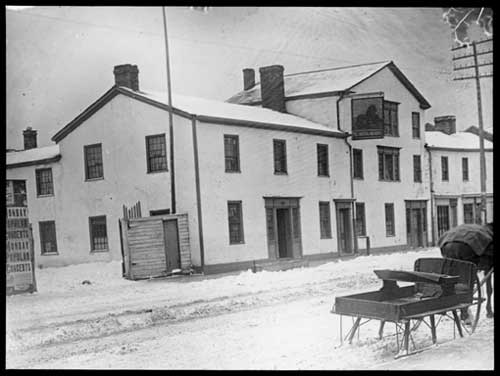 Came across this image of the Red Lion Inn in Toronto at the Archives of Ontario. The photo is from 1886 and shows a building well into its eighth decade according to this blog post of just a few months ago. Built in what was then the country, it was the first stage coach destination on the western route out of the capital, then named York, located around what is now Yonge and Bloor. It would have been about 2 miles to the NNW of the slightly older Playter’s Tavern.
Came across this image of the Red Lion Inn in Toronto at the Archives of Ontario. The photo is from 1886 and shows a building well into its eighth decade according to this blog post of just a few months ago. Built in what was then the country, it was the first stage coach destination on the western route out of the capital, then named York, located around what is now Yonge and Bloor. It would have been about 2 miles to the NNW of the slightly older Playter’s Tavern.
What I like about the photo is how it likely displays three or four additions to what Roberts describes as the original Upper Canadian government approved standard layout Georgian wooden frame structure with the front door centered between two main floor windows and beneath the center window on the second floor. There would have been a chimney at each end of the building, though in the photo the one farther from the photographer could have been rebuilt when the next taller extension was built. The announcement of its opening was set out in a notice in the Gazette of June 13, 1808:
Beefsteak and Beer House. — The subscriber informs his friends and the public that he has opened a house of entertainment next door to Mr. Hunt’s, where his friends will be served with victualing in good order, on the shortest notice, and at a cheap rate. He will furnish the best strong beer at 8d. New York currency per gallon if drank in his house, and 2 s. 6d. New York currency taken out. As he intends to keep a constant supply of racked beer, with a view not to injure the health of his customers, and for which he will have to pay cash, the very small profits at which he offers to sell, will put it out of his power to give credit, and he hopes none will be asked. N.B. He will immediately have entertainment for man and horse. Daniel Tiers. York, 12th January, 1808.
Not sure what entertainment for the horse suggested. I expect the original tavern would have looked a lot like the brick-built Fryfogel’s Tavern near New Hamburg in Perth County, under 100 miles but a couple of decades of settlement to the west. Like Fryfogel’s, the Red Lion had a ballroom and also served government administrative purposes as a district polling location in elections.
Howe’s Public Houses Of Entertainment In Nova Scotia
I picked up my copy of Western and Eastern Rambles: Travel Sketches of Nova Scotia by Joseph Howe this morning. The sketches are a series of essay’s the later famous politician published in his newspaper, the Novascotian, from 1828 to 1831. His travels were largely not about the writing but required to get his subscription money from rural readers but in deciding to record his trips out of the capital of Halifax he also was able to capture the times and scenes around him.
I originally thought I would find lots of beer references but, as we learned about Ontario from the 2010 book In Mixed Company: Taverns and Public Life in Upper Canada, it all seems to be either about wines or, especially with Howe, a good cup of tea. Not that he is an early prohibitionist as he suggests in this passage describing the night life offered to a stage traveler landing in what is now Kentville:
…hardly do you get into the village before some long-legged Merchant pops you into a gig and gallops you away to church – or some other sinner of the same stamp gets you into his house, from which it is no easy matter to escape. You may run about, like Blair‘s soul, knocking at every outlet but in vain – Port stands sentry in one place – Madeira in another, while Claret, at the head of Bacchus’s light infantry, fairly cuts you off from every retreat; while the graceful restraint of a reiterated welcome from a youthful matron, and the childish prattle of sweet little Bess, make you almost forget your home, and swear that the village should have been called Hospitality instead of Horton Corner.
He recommends, if you have to be on your way, to stay instead with Mrs. Fuller of the Kentville Inn for quieter company where you can “get to bed by times” and make the stage coach when it leaves at 5 am. So, Howe’s record is one of a businessman doing business, describing his trip back to his customers and readership, seeking respectable company as well as good nights worth of sleep. While he does admit to having “a glass or two of strawberry wine” at the hospitable cottage of Mrs. Miller in Truro, for the most part the inns Howe describes offer quiet.
Up top is a picture from the 1950s of the still standing Ottawa House in Parrsboro built in 1773 or 1765. 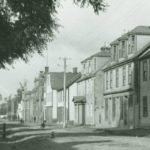 The thumbnail to the right is a 1908 photo of Pictou’s Church Street including a stone building, third from right, known as Lorrain’s Hotel, built as an inn and tavern in about 1820. Howe does not record visiting either of these specifically but they are likely examples of the finer sort of establishment he might have encountered on his way. Not all were so well kept as this description of one from 1817 shows. And unlike as Roberts describes as the Upper Canadian government approved architecture, the Nova Scotian versions of these establishments appear to be up to the owner.
The thumbnail to the right is a 1908 photo of Pictou’s Church Street including a stone building, third from right, known as Lorrain’s Hotel, built as an inn and tavern in about 1820. Howe does not record visiting either of these specifically but they are likely examples of the finer sort of establishment he might have encountered on his way. Not all were so well kept as this description of one from 1817 shows. And unlike as Roberts describes as the Upper Canadian government approved architecture, the Nova Scotian versions of these establishments appear to be up to the owner.
Update: By the way, “public house of entertainment” was what they were called on the license and interestingly, not only does Google maps show Lorrain’s Hotel of Pictou was still there in 2009 but so were its two neighbours shown in the 1908 photograph. See below…
